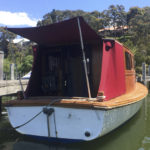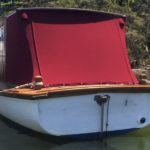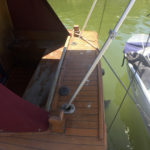Company:
Canvas Barn Marine Trimming
Project Details
Fabric 1
Sunbrella
Producer:
Glen Raven Custom Fabrics LLC
Supplier:
Nolan UDA
Fabric 2
Stamoid
Producer:
Serge Ferrari North America Inc.
Supplier:
Bainbridge
Fabric 3
PTFE
Producer:
OTHER
Supplier:
OTHER
Fabric 4
OTHER
Producer:
OTHER
Supplier:
OTHER
Fabric 5
OTHER
Producer:
OTHER
Supplier:
OTHER
Design Name
Aaron Stroud
Design Company
Canvas Barn Marine Trimming
Fabrication Name
Aaron Stroud and Kym Smith
Fabrication Company
Canvas Barn Marine Trimming
Please describe the project specifications
“Phoenix” is a timber cruising boat used recreationally in the Gippsland Lakes. Our client requested a stern cover with a large stern window to protect the boat, that had no door to the interior from weather and vermin, particularly water rats and cormorants, while allowing the cover to remain in place during operation affording the occupants a view through the window and allowing light to enter the stern area.
During the patterning process, the client’s wife arrived and completely changed the brief, requesting the stern cover raise up to become an awning to provide shade on hot summer days.
Fabric used, Sunbrella “Burgundy”, Stamoid Open and Stamoid Top for reinforcing and backing. Tenara PTFE thread and YKK #10 zips completed the project.
What was the purpose of this project? What did the client request?
The client is new to boating and met with us at the boat to discuss some type of cover for his boat, “Phoenix”. A simple stern cover with window panel in the rear section was agreed upon.
The central panel was to roll up for use, but needed the functionality to remain in place with the occupants on board the vessel. The cover would serve to protect the interior and stern from the elements and vermin.
What is unique or complex about the project?
After that initial meeting, all contact with the client was either by email or text message. He and his wife spent long holidays overseas with her family, and he was unable to bring the vessel close to us for the job to be completed. This meant access to “Phoenix” involved a 50km round trip on water each time we needed to work on her.
Our first patterning trip was disastrous! We arrived at the mooring on the agreed date to find the boat missing. The owner had organised her yearly work on the slip, but had forgotten to let us know before he went overseas.
The client had requested work to be done during the winter months, but finding another good weather day enabling us to get out on the water proved difficult with wild weather and strong wind. We finally got to work on the vessel in spring.
Just after we arrived at the vessel the owner’s wife also arrived. She had chosen a bright burgundy acrylic canvas to remind her of the tropical birds and flowers of her homeland. Withe the vessel’s name being “Phoenix”, we thought this a fitting choice. The vessel is moored in a fairly sheltered cove, protected from all but mid-day sun, so the burgundy colour should not fade significantly.
Discussion was had about how the cover would work, and the client’s wife was adamant that she wanted to be able to raise the centre panel of the stern awning to provide shade. Our brief had been for a large window in that panel, so there was no hope that a large clear panel would give any shade at all!
After the wife’s client left, we re-evaluated the project on the spot and came up with a design that would work as a stern cover as well as a raised awning.
The client approved his wife’s changes in a text message, and the clear panel was no more.
Track was installed under the stern edge of the roof in a manner that replicated the shape of the curve, but in reverse. This allowed the rear panel to raise up and sit flat.
Rod holders already mounted in the rear deck could be used to support poles and fittings on the transom were available to use to attach simple guy ropes.
The cover was manufactured and good weather allowed a fit-off almost immediately. The cover is binding free, with hidden reinforcing and turned hems, giving as neat a finish inside as outside.
The cover slides in track along the around all three top edges. Snaps and Toggle fasteners were used to fit to the coaming. Each panel is removable, and a custom-made bag was provided for storage. The rear centre panel can be rolled up, removed or used as an awning during fair weather. Custom made vents were added to improve ventilation, without letting vermin inside.
What were the results of the project?
“Happy wife, happy life,” was the text message we received. Win-win, apparently!
Content is submitted by the participant. IFAI is not responsible for the content descriptions of the IAA award winners.
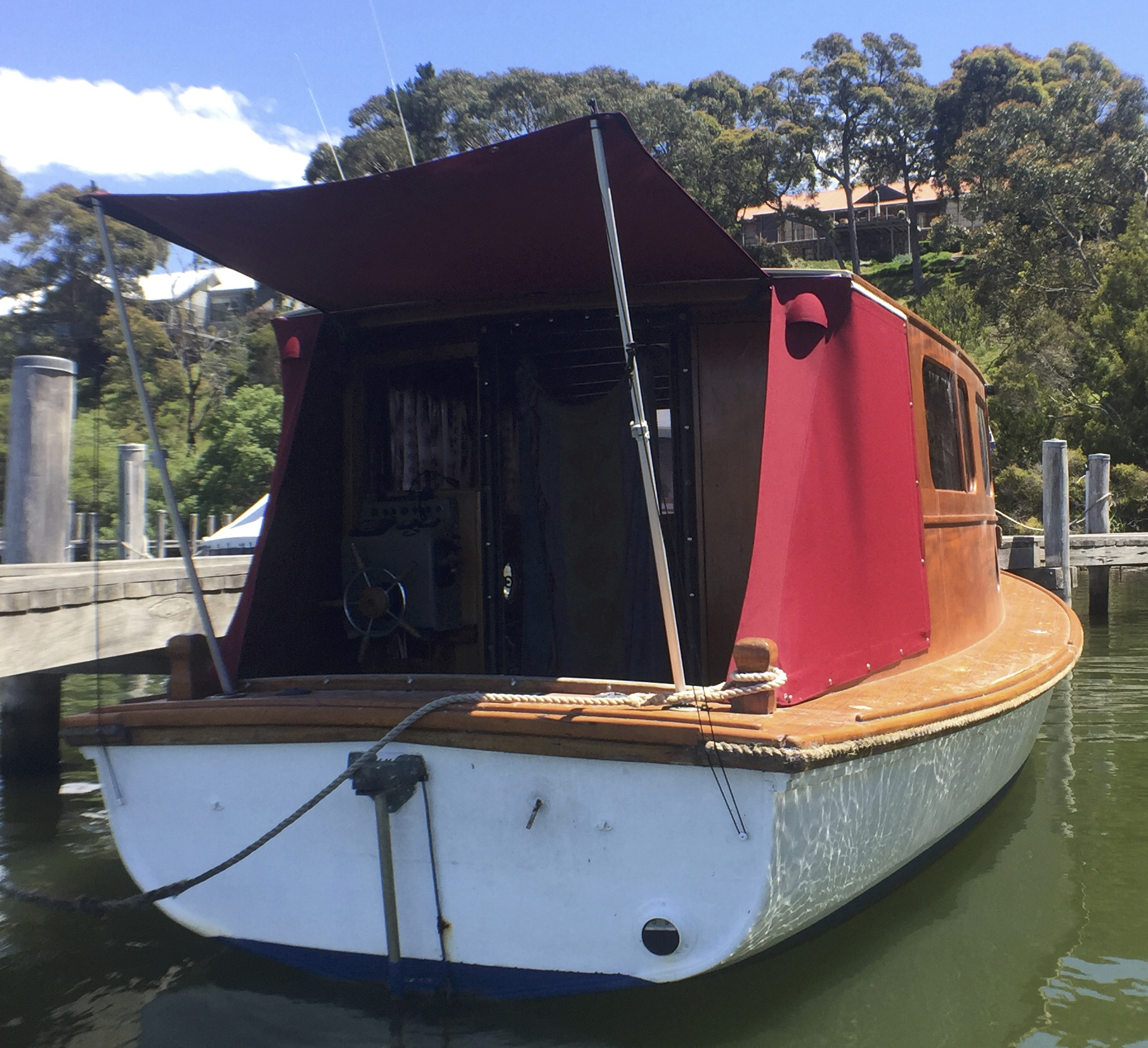

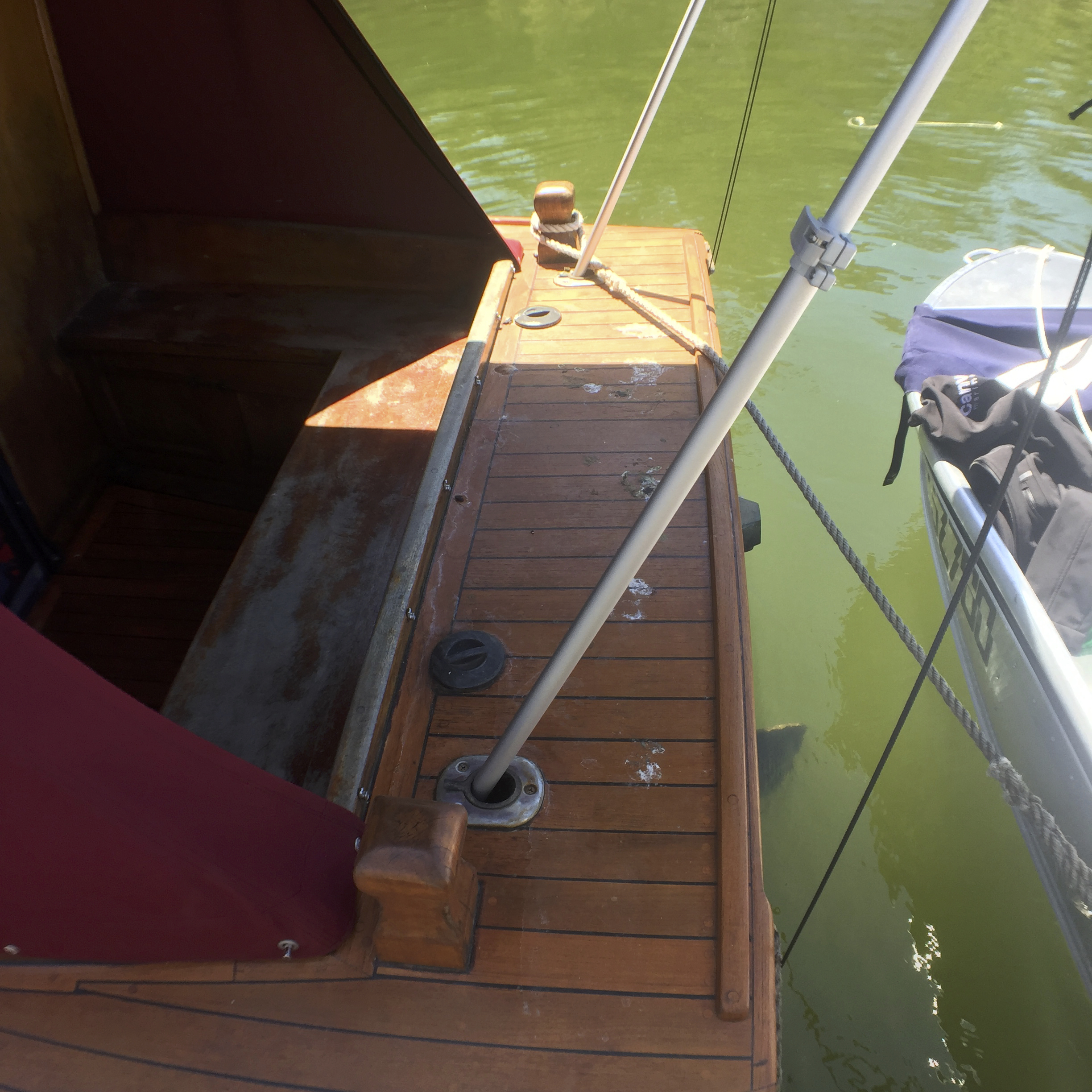
 TEXTILES.ORG
TEXTILES.ORG



